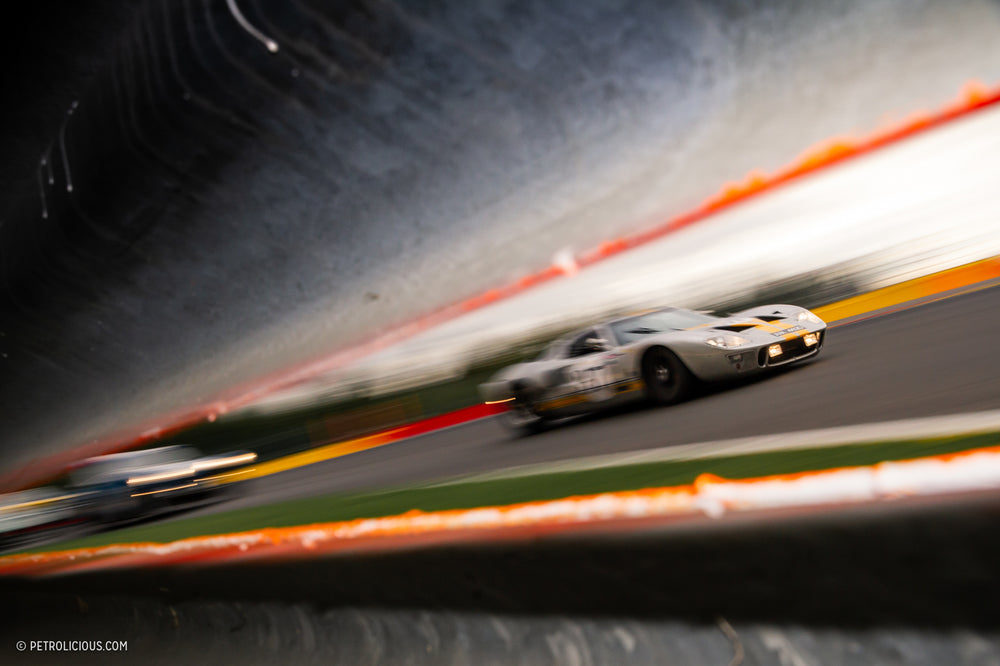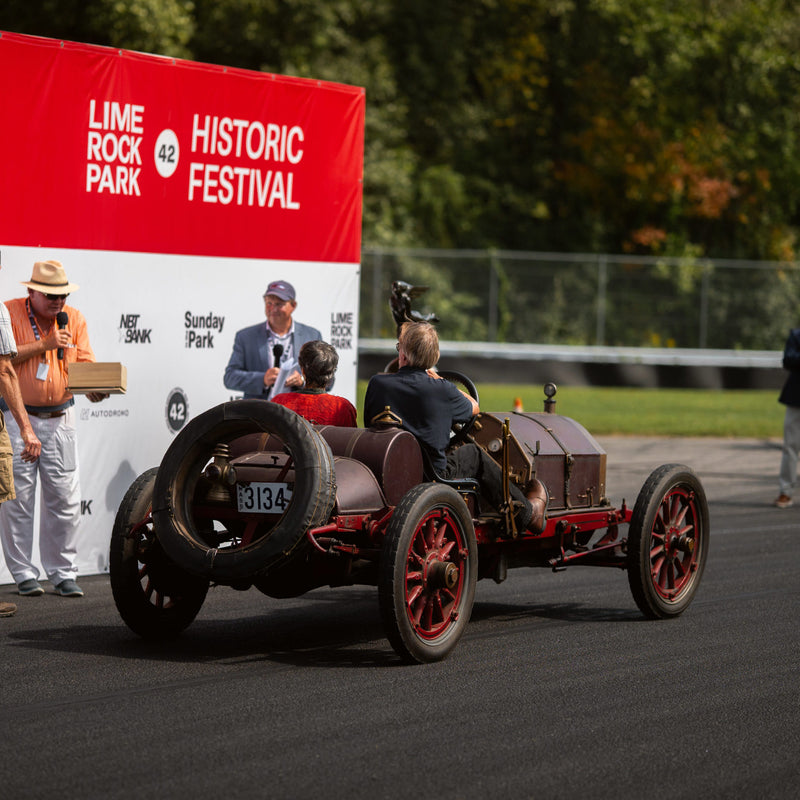Automotive heaven and hell. This was the Spa Six Hours in summary. The heavenly aspect should become clear within seconds of seeing the pictures: I was surrounded by the gods and goddesses of all religions in historic racing. Constantly. Pre-War sports cars, touring cars, formula cars, grand prix cars, and endurance legends from more recent history to name but a few. Now you might ask yourself: why does this guy consider himself in hell then? For mostly the same reasons: this cornucopia just made it impossible for me to decide where to look and go first. It was my figurative tensile test.












After eventually freeing myself of this state of paralyzation, I finally decided to go somewhere, enjoy my choice, and take in what I could. It quickly became obvious to me that this event could easily rest on top of every other motoring event I’ve visited. As a photographer, this was the first major event I received official accreditation for, meaning I had access to the restricted zones as well. It was my first time with this kind of access, and I though I’ve seen many a great capture from this track in the past, I had high hopes of making my perspective a fresh one. If and how that goal actually influenced and enhanced my photography, I will reveal later on. But first, the cars!
I have never seen so many different shapes, neither have I listened to so many different engine notes in one race event. If I were to put things in generalized buckets—so much to see requires a few generalizations—then I’d organize based on the following: the older the cars, the more they were focused on horsepower (aerodynamics must have seem like quantum physics back in the ‘30s), while the more modern edge of the participants stretches into the 2000s wherein the name of the game became efficiency of both engines and aero. That much is obvious, but to see both ends of the spectrum and everything in between in front of your very eyes and sharing the same track was an informative, gorgeous piece of visual history.






Besides the automotive attendees, another truly wonderful feature of this event—aesthetically speaking—was the time slot of the main race: starting at four o’clock in the afternoon, the running time of six hours meant it would be pitch-black until the checkered flag fell. In the meantime, hours of golden light and a deep red sunset above the Ardennes provided a glorious backdrop for spectators and photographers. And with a field of historic cars even the night racing looked spectacular: they illuminate everything except the road in front of them!








What this event provided as well, even for regular visitors, was an extensive area to explore. Instead of being bound to a fixed seat on a grandstand, you were welcome to stroll through the pit lane and sneaking into a few garages wouldn’t be likely to get you kicked out here. What a magical (and strangely clean) place this was! Literally every automotive icon from my childhood and beyond honored us with its presence, some in their complete forms, some dismantled down to the chassis. This, combined with an extraordinarily relaxed atmosphere, made it hard to believe that this still was a high-profile racing event and not a static exhibition.




Which brings me to the next point: the racing itself. Do you think this can be broken down to nothing more than dreary demonstration runs by overcautious drivers in rolling investments? Nope, that’s not exactly what happened here. I was instead treated to tight wheel-to-wheel racing which, inevitably, took its toll more than once. No matter though, as it seems tape holds GT40s together the same way it does anything else. Rather than retire from some body damage, these drivers would rather be out on track making up lost positions. Always time for repairs afterwards, right?






Remembering one particular incident still raises the hairs on neck though: the cloak of darkness had already laid itself down on the circuit as I was walking the footpath above Blanchimont. As the fastest corner of the track by far, it is not an enjoyable trip to take wide. The bend is rounded at about 200mph in modern grand prix cars, and even the field of historic cars passed me flat out through this section. This provided a monumental and almost hypnotic acoustic backdrop that, suddenly, was disrupted by the unmistakable sound of tires that had lost their grip, linked with the certainty that the driver had lost his circle of influence over his machine.






The threatening soundscape from behind immediately snapped me around to look. What appeared to me like a large ball of mirrors was in fact the wildly spinning, silver-colored shape of a car that was smashing into the guardrail. The shock of impact was tangible more than ten meters above this sad scene, and it instantly shattered that perfect dreamland of motor racing I was lulled into moments earlier. I noticed wheels and other parts flying across the track, and in the headlights of approaching competitors the crumpled wreck clearly appeared as the remains of a Jaguar E-Type.
Hopes now resting on the reaction times of the cars approaching the wreck, for god’s sake everybody else managed to avoid the danger until, finally, the safety car was deployed in front of the field. I can tell you that these seconds felt like minutes. Finally, a number of rescue vehicles appeared and the trackside was filled with paramedics and marshals to secure the accident site, and much more importantly, get the driver out of the smoking hull. What I witnessed then made me realize that if I ever get the chance to race a car, it would certainly not be an E-Type! Getting the driver out of the somewhat caved-in cockpit took ages. I remember one marshal crawling through the passenger window horizontally to get to the driver because his door was jammed. They even had to rip out the windscreen, but the mechanic’s concern certainly was of a low priority now. At last, the driver was extracted safely and brought to a local hospital.
This accident was one more reminder that motorsports will never lose their danger as long as cars and other vehicles are driven toward their edges. As a spectator, and even more so as a photographer, you absolutely and always must keep sight of what’s happening on the track. And even if you do, things can change from heaven to hell in an instant.



Which brings me back to the question if going really close to the track thanks to being accredited resulted in the bonus I expected in terms of images. Right now, as this event is still is quite fresh to me, I am not sure if it is worth the risk. There’s the obvious concern of safety, but beyond that I felt that by stepping close to the white lines I was losing one very important stylistic element for creating unique pictures: the foreground. Being close to the cars surely empowers you to do some full-frontal, in-your-face shots, but that just wouldn’t be my style. I love shooting through the fence, the trees, the crowd, and the track marshals which enhances the pictures with so much more rhythm, color, vividness, and drama, especially when performing slow shutter panning shots. Which absolutely doesn’t mean you can’t do great shots without a spectacular foreground, but for the time being I’ll leave that to others.







One final word of inspiration to all the fellows trying to get accredited or hoping that an accreditation will directly result in better pictures. In my opinion that is not necessarily the case. Think about this: by shooting through the fence from spectator areas, you are forced to think more creatively and to use all the elements in the frame to your advantage. As a side remark, approximately 90 percent of the images you see here were taken from these areas. Finally, I want to encourage everybody, no matter if you are an aspiring, a semi-professional, or a professional photographer already, to use the gear you have and the conditions you come upon to exploit it all to the fullest. New gear doesn’t fix bad habits, it only enhances good ones.
























































